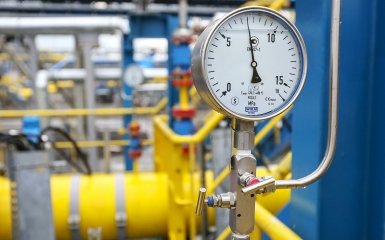In May, gas imports from Russia to Europe exceeded supplies from the US for the first time in almost two years, despite attempts by European countries to abandon Russian fossil fuels.
Points of attention
- In May 2022, Russia overtook the US in gas supplies to Europe, despite Europe's efforts to reduce dependence on Russian fuel.
- Gas demand in Europe remains at a low level, and gas reserves in storage are at a record high, which affects supply dynamics.
- Ukraine may become a victim of the termination of gas transit through its territory due to the termination of the transit agreement between Russia and Europe.
- European countries are discussing possible sanctions against Russian LNG, but do not yet consider a complete ban on imports.
- Russia plans to focus on increasing gas exports to Asia to compensate for losses from reduced supplies to Europe.
In May, Russia delivered more gas to Europe than the United States
The Financial Times writes that after Russia's full-scale invasion of Ukraine in February 2022, Moscow cut pipeline gas supplies to Europe, and the region increased LNG imports, with the United States becoming the main supplier. In September 2022, the US overtook Russia as the supplier of gas to Europe, and from 2023 it will account for about a fifth of supplies.
Last month, deliveries of Russian pipeline gas and LNG made up 15% of the total volume of deliveries to the EU, Great Britain, Switzerland, Serbia, Bosnia and Herzegovina and North Macedonia. LNG from the US accounted for 14% of total shipments to the region, the lowest since August 2022.
In mid-2022, Russia stopped supplying gas through pipelines connecting it to northwestern Europe, but continues to supply it through Ukraine and Turkey.
In May, supply volumes were affected by one-off factors, including disruptions at a major US LNG exporter, and in June, Russia sent more gas through Turkey ahead of planned repairs. Demand for gas in Europe also remains relatively weak, with storage levels at a record high for this time of year.
Tom Marcek-Manser, head of gas analytics at the ICIS consulting company, noted that "such a turnaround is unlikely to last long," as Russia will be able to supply LNG to Asia via the Northern Sea Route in the summer. According to him, this will most likely lead to a reduction in the volume of supplies to Europe, while the production of LNG in the US has increased again.
The transit agreement between Ukraine and Russia also expires this year, which puts gas flows through this route at risk. The European Commission supports efforts to develop an investment plan to expand the capacity of the Southern Gas Corridor pipelines between the EU and Azerbaijan.
A high-ranking representative of the EU stated that supplies on this route are not yet enough to replace the 14 billion cubic meters of Russian gas that came through Ukraine.
EU Energy Commissioner Kadri Simson said that during a trip to Japan, she raised concerns that LNG was being diverted from Europe to meet demand in Asia. Tokyo and Brussels have created an "early warning system" to monitor LNG shortages and agreed that countries should take energy-saving measures, she said.
The EU is ready to compensate for any negative events related to supply or demand on the world gas markets. "Our gas storage remains at a record high, and gas demand has stabilized at a record low, down 20% from 2021," Simson concluded.
Sanctions against Russian LNG
EU countries are discussing sanctions against Russian LNG in Europe, but are not considering a complete import ban.
FT wrote that "Gazprom" in the next 10 years is unlikely to be able to restore the volume of gas sales lost due to the full-scale invasion of Ukraine. Exports to Europe by 2035 will amount to an average of 50 billion-75 billion cubic meters per year — almost a third of the pre-war level.
To offset losses from the loss of the European market, Russia has focused on increasing gas exports to China, but this decision may reveal
More on the topic
- Category
- Economics
- Publication date
- Додати до обраного


